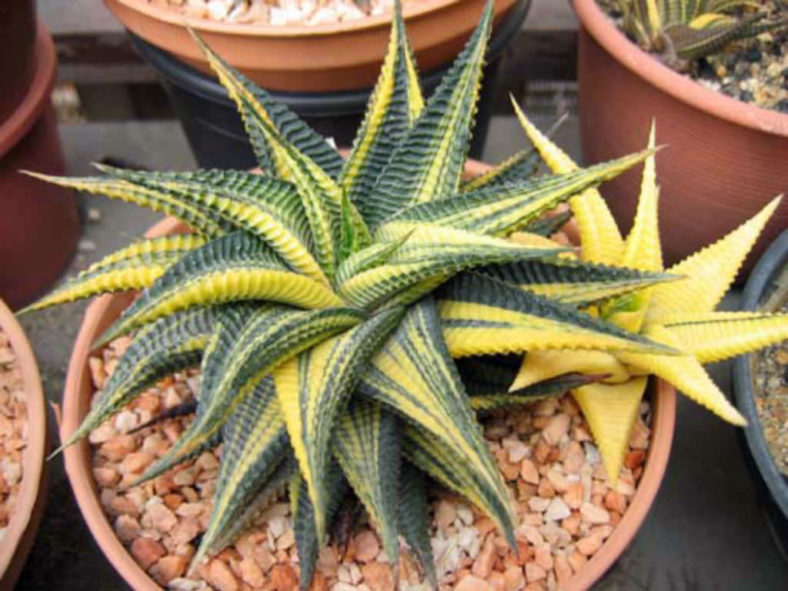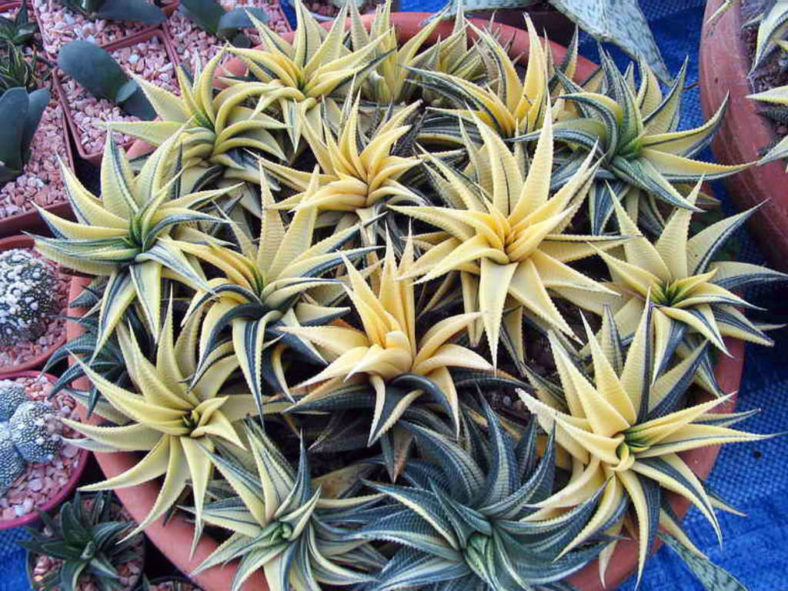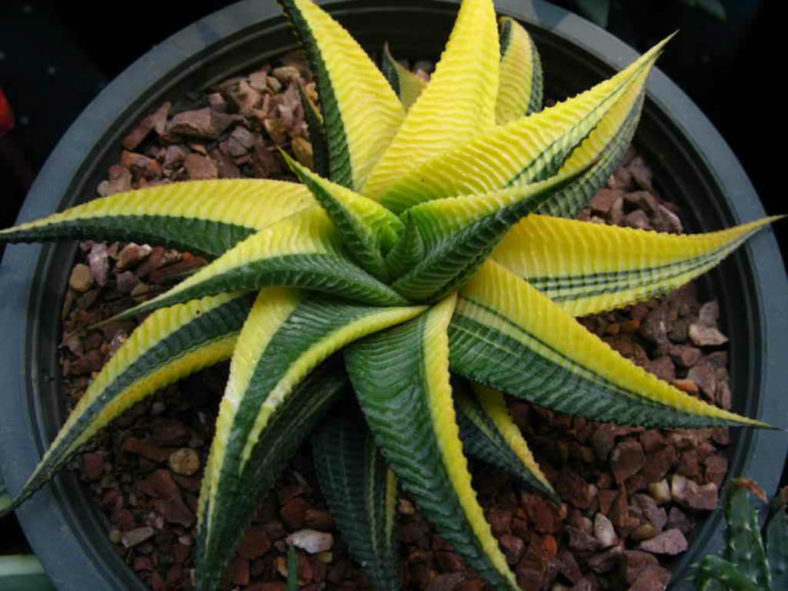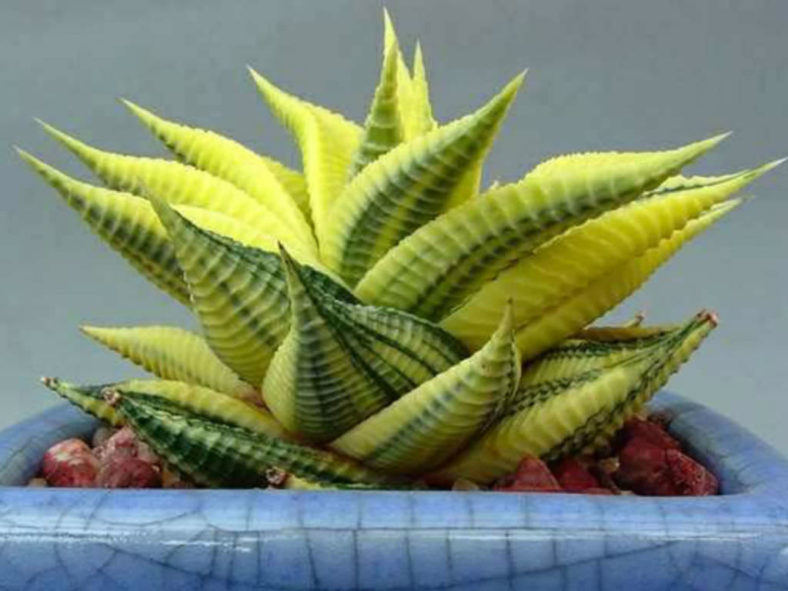Scientific Name
Haworthiopsis limifolia f. variegata
Accepted Scientific Name
Haworthiopsis limifolia (Marloth) G.D.Rowley
Common Name(s)
Fairy Washboard, File-leafed Haworthia
Synonym(s)
Haworthia limifolia f. variegata
Scientific Classification
Family: Asphodelaceae
Subfamily: Asphodeloideae
Tribe: Aloeae
Genus: Haworthiopsis
Etymology
The formal epithet "variegata" (pronounced "var-ee-GAY-tuh") means "variegated; having a pattern of different colors or marks."
Origin
Haworthiopsis limifolia f. variegata is a variegated form of Haworthiopsis limifolia. Haworthiopsis limifolia is native to southeastern Africa (Swaziland, southern Mozambique, and KwaZulu-Natal and Mpumalanga provinces of South Africa).
Description
Haworthiopsis limifolia f. variegata, formerly known as Haworthia limifolia f. variegata, is an attractive succulent that forms small rosettes of dark green leaves with irregular, cream-colored to yellow markings. The rosettes can reach a diameter of 4 inches (10 cm). The leaves are triangular to ovate-lanceolate, spreading, and very broad at the base, measuring up to 3 inches (7.5 cm) in length and 1 inch (2.5 cm) in width.
In late summer and fall, Haworthiopsis limifolia f. variegata can produce white, tubular, and not very showy flowers on slender stalks that can grow up to 14 inches (35 cm) long.

Hardiness
USDA hardiness zones 10a to 11b: from 30°F (-1.1°C) to 50°F (10°C).
How to Grow and Care
These succulents are not considered difficult to grow as houseplants. If you can keep a pot of Aloe alive on a windowsill, you can do the same with a dish of Haworthia. As with all succulents, the most common issue is overwatering. They should never be allowed to sit in water under any circumstances. At the same time, these small decorative plants can be grown in interesting containers such as teacups and even miniature baby shoes. If you're given a Haworthia in such a container, ensure the container has adequate drainage.
Haworthias are small, typically ranging from 3 to 5 inches (7.5 cm to 12.5 cm) in height, and are relatively slow-growing. Therefore, they are often grown in small clusters in wide, shallow dishes. Over time, clusters will naturally enlarge as the mother plant sends off small plantlets. When the cluster has outgrown its container, repot into a new wide and shallow dish with fresh potting soil in the spring or early summer. This is also the time to take offsets for propagation.
Learn more at How to Grow and Care for Haworthia.
Links
- Back to genus Haworthiopsis
- Succupedia: Browse succulents by Scientific Name, Common Name, Genus, Family, USDA Hardiness Zone, Origin, or cacti by Genus
Photo Gallery
Click on a photo to see a larger version.


